List of best books every HR professional should read
Here is the list of the most popular HR books for professionals in Human Resources:
HR book #1:
WORK RULES!: Insights from Inside Google That Will Transform How You Live and Lead
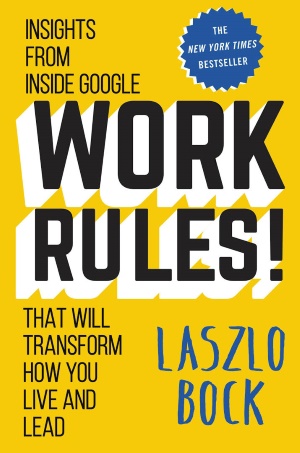
Author: Laszlo Bock
"We spend more time working than doing anything else in life. It’s not right that the experience of work should be so demotivating and dehumanizing" - Laszlo Bock
This insight is the heart of WORK RULES!, a compelling and surprisingly playful manifesto with the potential to change how we work and live.
Drawing on behavioral economics and human psychology, Bock provides teaching examples from a range of industries. He also reveals why Google is consistently rated one of the best places to work, sharing counterintuitive principles that are easy to put into action.
WORK RULES! shows how to strike a balance between creativity and structure, leading to success you can measure in quality of life as well as market share. Read it to build a better company from within rather than from above; read it to reawaken the joy in what you do.
This one has to be on your list of best HR books!
HR book #2:
Creating a Kaizen Culture: Align the Organization, Achieve Breakthrough Results, and Sustain the Gains
Authors: J. Miller, M. Wroblewski, J. Villafuerte
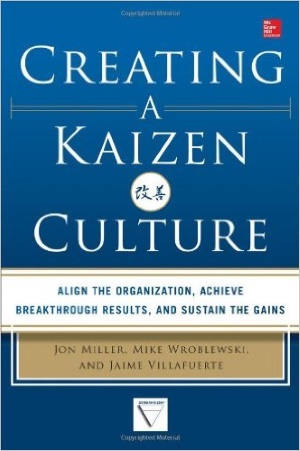
“The only thing of real importance that leaders do is to create and manage culture.” – Edgar Schein
Organizational culture is a double-edged sword that can either elevate a company to world-class status, or reduce the most brilliant strategy to a recipe for disaster. Superior strategies, technologies and methods such as lean, kanban and six sigma fail without human systems to link effective leaders with engaged employees. The kaizen process, when applied mindfully to organizational culture, has been proven to achieve this. Leaders who create kaizen cultures enable their people to engage, innovate, adapt and sustain high performance.
HR book #3:
Good to Great: Why Some Companies Make the Leap... and Others Don't
Author: James C. Collins

The Challenge
Our list of top HR books for HR Professionals wouldn't be complete without this one!
Built to Last, the defining management study of the nineties, showed how great companies triumph over time and how long-term sustained performance can be engineered into the DNA of an enterprise from the very beginning.
But what about the company that is not born with great DNA? How can good companies, mediocre companies, even bad companies achieve enduring greatness?
The Study
For years, this question preyed on the mind of Jim Collins. Are there companies that defy gravity and convert long-term mediocrity or worse into long-term superiority? And if so, what are the universal distinguishing characteristics that cause a company to go from good to great?
The Standards
Using tough benchmarks, Collins and his research team identified a set of elite companies that made the leap to great results and sustained those results for at least fifteen years. How great? After the leap, the good-to-great companies generated cumulative stock returns that beat the general stock market by an average of seven times in fifteen years, better than twice the results delivered by a composite index of the world's greatest companies, including Coca-Cola, Intel, General Electric, and Merck.
The Comparisons
The research team contrasted the good-to-great companies with a carefully selected set of comparison companies that failed to make the leap from good to great. What was different? Why did one set of companies become truly great performers while the other set remained only good?
Over five years, the team analyzed the histories of all twenty-eight companies in the study. After sifting through mountains of data and thousands of pages of interviews, Collins and his crew discovered the key determinants of greatness — why some companies make the leap and others don't.
The Findings
The findings of the Good to Great study will surprise many readers and shed light on virtually every area of management strategy and practice. The findings include:
Level 5 Leaders: The research team was shocked to discover the type of leadership required to achieve greatness.
The Hedgehog Concept (Simplicity within the Three Circles): To go from good to great requires transcending the curse of competence.
A Culture of Discipline: When you combine a culture of discipline with an ethic of entrepreneurship, you get the magical alchemy of great results. Technology Accelerators: Good-to-great companies think differently about the role of technology.
The Flywheel and the Doom Loop: Those who launch radical change programs and wrenching restructurings will almost certainly fail to make the leap.
“Some of the key concepts discerned in the study,” comments Jim Collins, "fly in the face of our modern business culture and will, quite frankly, upset some people.”
Perhaps, but who can afford to ignore these findings?
"Some of the key concepts discerned in the study," comments Jim Collins, "fly in the face of our modern business culture and will, quite frankly, upset some people."
Perhaps, but who can afford to ignore these findings?
HR book #4:
Predictably Irrational, Revised and Expanded Edition: The Hidden Forces That Shape Our Decisions
Author: Dan Ariely
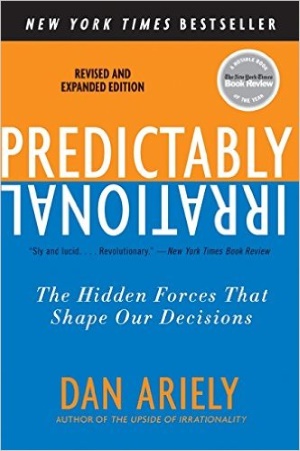
Why do our headaches persist after we take a one-cent aspirin but disappear when we take a fifty-cent aspirin? Why do we splurge on a lavish meal but cut coupons to save twenty-five cents on a can of soup?
When it comes to making decisions in our lives, we think we're making smart, rational choices. But are we?
In this newly revised and expanded edition of the groundbreaking New York Times bestseller, Dan Ariely refutes the common assumption that we behave in fundamentally rational ways. From drinking coffee to losing weight, from buying a car to choosing a romantic partner, we consistently overpay, underestimate, and procrastinate. Yet these misguided behaviors are neither random nor senseless. They're systematic and predictable—making us predictably irrational.
HR book #5:
HR Answer Book, The: An Indispensable Guide for Managers and Human Resources Professionals
Author: S. Smith, R. Mazin
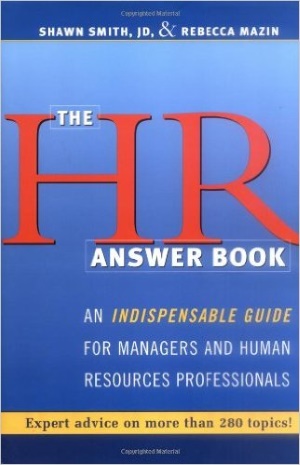
The HR Answer Book addresses 200 questions that every employer needs to deal with, from recruiting and hiring to discipline and termination, compensation and benefits to training and employee relations. Accessible and concise, this on-the-job companion offers expert guidance on all types of "people" issues, enabling managers and human resources professionals to: * Save time, money, and trouble * Increase employee productivity, satisfaction, and retention * Attract and hire the best candidates while avoiding the inferior ones* * Handle tough issues like sexual harassment, Internet and e-mail usage, performance problems, and more -- fairly, sensitively, and legally. The HR Answer Book is an easy-to-use problem solver that can be read cover-to-cover or as a quick reference in specific situations. An appendix of tools, templates, and lists of additional resources completes this excellent and valuable guide.
HR book #6:
Social Media Recruitment: How to Successfully Integrate Social Media into Recruitment Strategy
Author: Andy Headworth
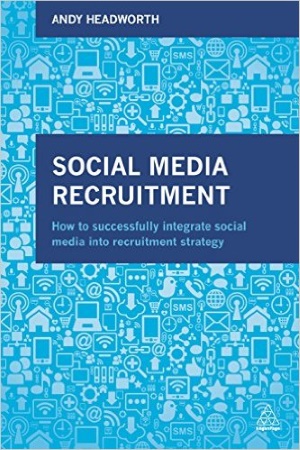
As the landscape of recruiting changes, different methods are needed to reach talent, and social media is a key channel. However, many HR and recruiting professionals are not equipped with the expertise to create a social media recruiting strategy.
In a series of easy to follow chapters and manageable steps, Social Media Recruitment covers the essentials from the beginning to the end of the process, including: how to implement a social media strategy; the crossover between HR, recruiting and marketing; measuring ROI; HR policies and procedures needed; big data and HR; using technology in recruiting, such as video interviewing; social media as an internal collaboration and communication tool across companies; how social media will impact recruiting and HR in the future.
Since we love social media recruitment, we decided to add this to our list of best HR books.
HR book #7:
Why Employees Don't Do What They're Supposed To and What You Can Do About It
Author: Ferdinand Fournies
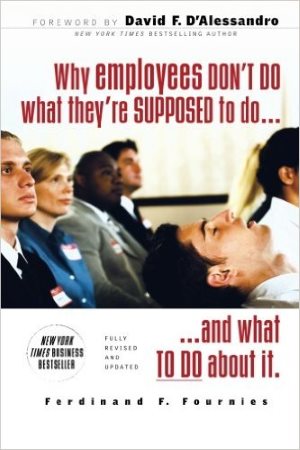
Based on the actual experiences of 25,000 managers, Why Employees Don't Do What They're Supposed to Do gives you proven, straightforward methods that work on real jobs, in the real world. This results-oriented guidebook helps you handle the top 10 situations in which employees don't perform the way they should, including a detailed analysis of the causes and the plans for preventing the same problems down the road.
Featuring fresh insights on outsourcing, temp workers, flex time, telecommuting, and technology, this no-nonsense resource arms you with the people-management skills you need to consistently elicit the highest levels of performance from your workforce.
In simple, straightforward language, Fournies offers practical solutions to the problems of employee performance this book should be on the desk of anyone who manages others. -Entrepreneur
HR book #8:
The Human Equation: Building Profits by Putting People First
Author: Jeffrey Pfeffer
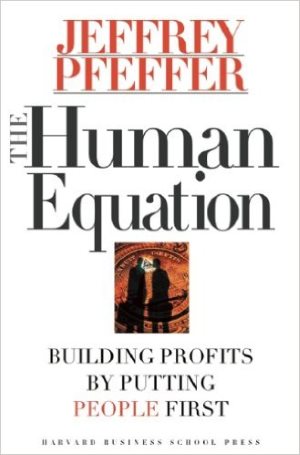
Why is common sense so uncommon when it comes to managing people? How is it that so many seemingly intelligent organizations implement harmful management practices and ideas? In his provocative new book, The Human Equation, bestselling author Jeffrey Pfeffer examines why much of the current conventional wisdom is wrong and asks us to re-think the way managers link people with organizational performance.
Pfeffer masterfully builds a powerful business case for managing people effectively—not just because it makes for good corporate policy, but because it results in outstanding performance and profits.
Challenging current thinking and practice, Pfeffer: reveals the costs of downsizing and provides alternatives; identifies troubling trends in compensation, and suggests better practices; explains why even the smartest managers sometimes manage people unwisely; demonstrates how market-based forces can fail to create good people management practices, creating a need for positive public policy; and provides practical guidelines for implementing high-performance management practices.
Filled with information and ideas, The Human Equation provides much-needed guidance for managing people more wisely and more profitably. We had to put in on our list of top HR books!
HR book #9:
Predictive Analytics for Human Resources
Authors: Jac Fitz-enz, John Mattox II
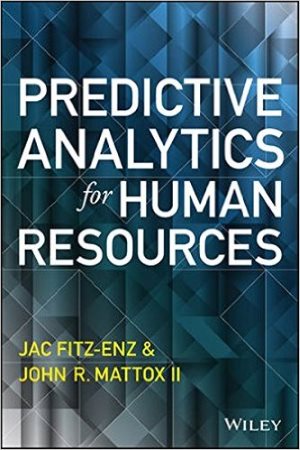
Create and run a human resource analytics project with confidence.
For any human resource professional that wants to harness the power of analytics, this essential resource answers the questions: "Where do I start?" and "What tools are available?" Predictive Analytics for Human Resources is designed to answer these and other vital questions.
The book explains the basics of every business—the vision, the brand, and the culture, and shows how predictive analytics supports them. The authors put the focus on the fundamentals of predictability and include a framework of logical questions to help set up an analytic program or project, then follow up by offering a clear explanation of statistical applications.
Predictive Analytics for Human Resources is a how-to guide filled with practical and targeted advice. The book starts with the basic idea of engaging in predictive analytics and walks through case simulations showing statistical examples. In addition, this important resource addresses the topics of internal coaching, mentoring, and sponsoring and includes information on how to recruit a sponsor. In the book, you'll find:
- A comprehensive guide to developing and implementing a human resource analytics project
- Illustrative examples that show how to go to market, develop a leadership model, and link it to financial targets through causal modeling
- Explanations of the ten steps required in building an analytics function
- How to add value through analysis of systems such as staffing, training, and retention
For anyone who wants to launch an analytics project or program for HR, this complete guide provides the information and instruction to get started the right way.
HR book #10:
Beyond HR: The New Science of Human Capital
Authors: John W. Boudreau, Peter M. Ramstad

Is your talent strategy a unique competitive advantage? As competition for top talent increases, companies must recognize that decisions about talent and its organization can have a significant strategic impact.
Beyond HR shows how organizations can uncover distinctive talent contributions, strategically differentiate their HR practices and metrics, and more optimally allocate talent to create value. Illustrations from companies such as Disney, Boeing, and Corning describe a new decision science called Talentship, that reveals opportunities by identifying strategy pivot points and the optimal talent and organization decisions that address them.
A unique framework helps readers identify their own distinctive strategic pivot points and connect them to talent decisions, showing how today’s “HR” can evolve to fulfill its potential as a source of strategic advantage.
HR book #11:
Investing in People: Financial Impact of Human Resource Initiatives (2nd Edition)
Authors: Wayne Cascio, John Boudreau
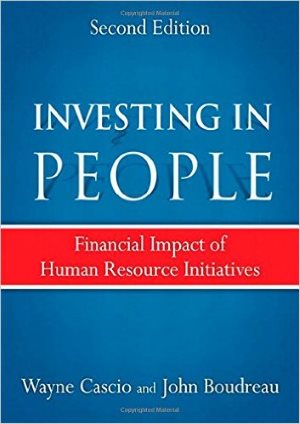
More than ever before, HR practitioners must empirically demonstrate a clear link between their practices and firm performance. In, Investing in People: Financial Impact of Human Resource Initiatives, Wayne F. Cascio and John W. Boudreau show exactly how to choose, implement, and use metrics to improve decision-making, optimize organizational effectiveness, and maximize the value of HR investments.
They provide powerful techniques for looking inside the HR "black box," implementing human capital metrics that track the effectiveness of talent policies and practices, demonstrating the logical connections to financial and line-of-business, and using HR metrics to drive more effective decision-making. Using their powerful "LAMP" methodology (Logic, Analytics, Measures, and Process), the authors demonstrate how to measure and analyze the value of every area of HR that impacts strategic value. Among the areas covered in depth are:
- Hiring
- Training
- Leadership Development
- Health and Wellness
- Absenteeism
- Retention
- Employee Engagement
Readers will master crucial foundational principles such as risk, return, and economies of scale and use them to evaluate investments objectively in everything from work/life programs to training. Also included are powerful ways to integrate HR with enterprise strategy and budgeting and for gaining commitment from business leaders outside HR.
HR book #12:
HR from the Outside In: Six Competencies for the Future of Human Resources
Author: Dave Ulrich, Jon Younger, Wayne Brockbank, Mike Ulrich
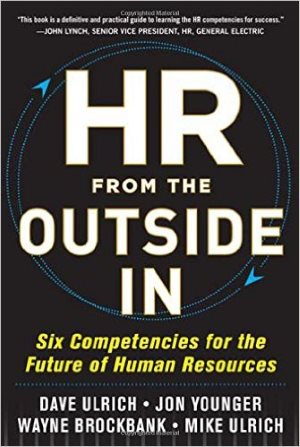
This definitive work on HR competencies provides ideas and tools that help HR professionals develop their career and make their organization effective. - Edward E. Lawler III, Professor, University of Southern California
This book is a crucial blueprint of what it takes to succeed. A must have for every HR professional. - Lynda Gratton, Professor, London Business School
One single concept changed the HR world forever: HR business partner . Through consistent cycles of research and practical application, Dave and his team have produced and update the most comprehensive set of HR competencies ever. - Horacio Quiros, President, World Federation of People Management Associations
Packed with facts, evidence, and prescriptive advice. It is about being a business leader first, and an HR professional second. - Randy MacDonald, Senior Vice President, Human Resources, IBM Corporation




























